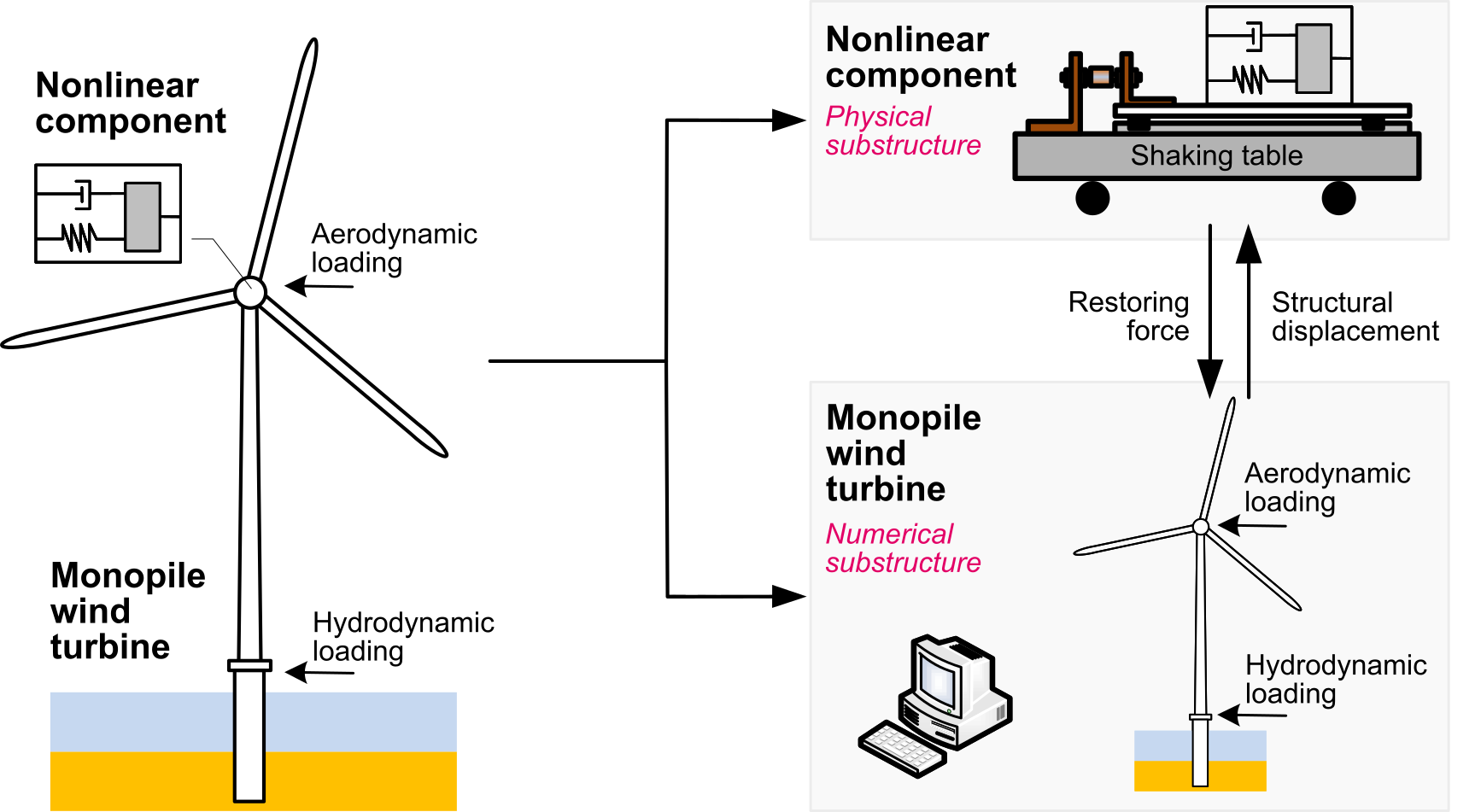Real-Time Hybrid Simulation
In real-time hybrid simulation (RTHS), the investigated systems are divided into a numerical substructure (calculated on a computer) and a physical substructure (e.g., tested on a shaking table). This approach allows for the efficient investigation of large systems that would not be feasible to test solely through experiments. The coordination of displacements and forces between the two substructures occurs in real-time, ensuring that the substructures interact and that the overall dynamic behavior is accurately captured. However, this method can quickly reach its limits, particularly when nonlinearities are involved and the number of degrees of freedom increases. In collaboration with our partners at Tsinghua University, we have developed measures to improve numerical efficiency, enabling the RTHS to be applied to complex, nonlinear phenomena in large systems with a high number of degrees of freedom.

Real-time hybrid simulation of an offshore wind turbine. While a component of the structure (e.g., a damping system) is tested on a shaking table, the rest of the structure is numerically simulated in real-time on a computer.
Ding H, Zhang Z, Wang J, Zhang J, Altay O (2024). Multiscale fluid-structure coupled real-time hybrid simulation of monopile wind turbines with vibration control devices. Mechanical Systems and Signal Processing. 215:111439. https://doi.org/10.1016/j.ymssp.2024.111439